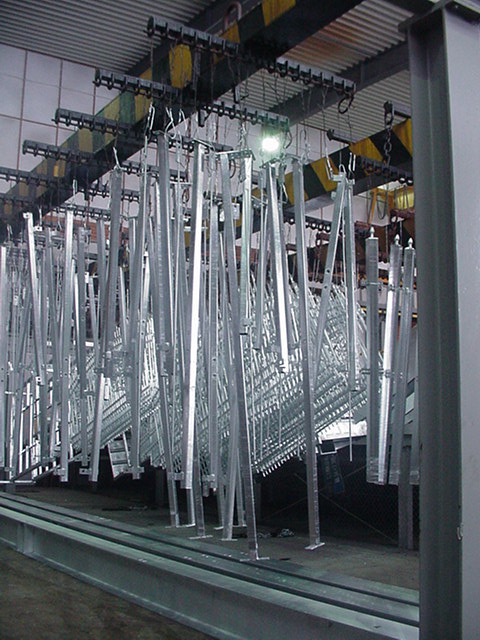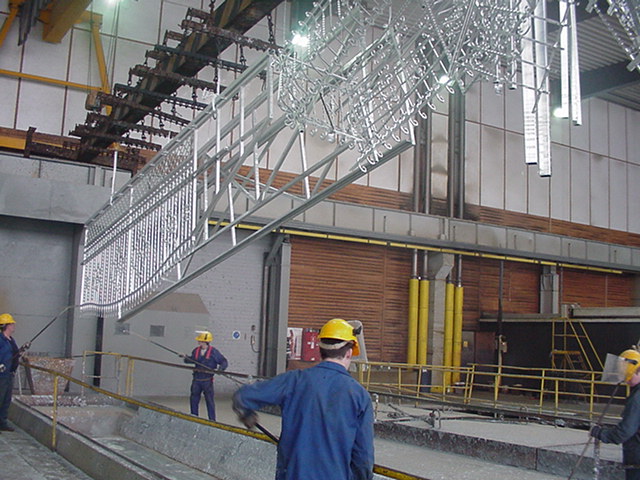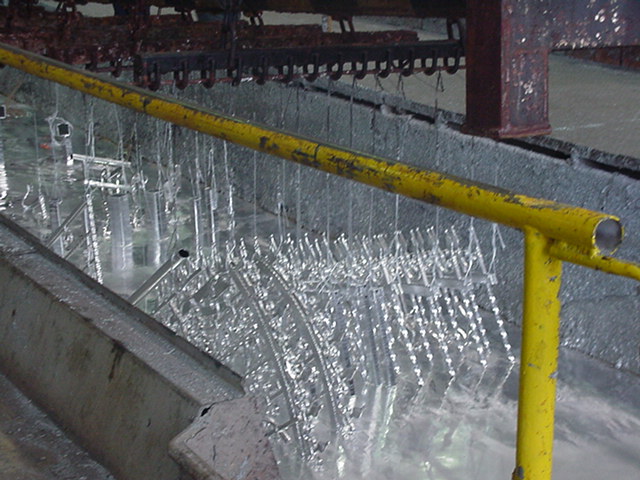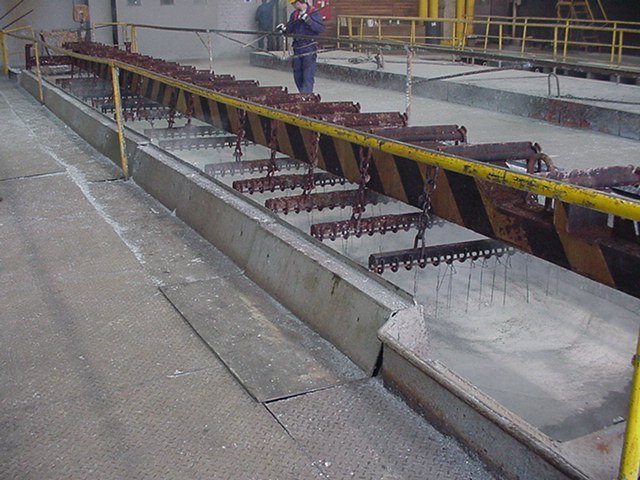Hot galvanizing
HOT GALVANIZING

Steel products improperly protected against external factors are characterized by reduced service life. There are various methods of preventing these unfavorable phenomena. From all known methods of anticorrosive protection of steel products, the best is hot galvanizing which is used for all our steel products. The zinc coating protects steel for many years and does not require maintenance.
During hot galvanizing, gradual diffusion of liquid zinc into the steel surface takes place, creating an alloy layer. After pulling out the galvanized object out of the zinc bath, a coat of pure zinc remains on the exterior surface of the alloy. The thickness of the zinc coat is measured in micrometers, or the weight of the zinc coat is given in g/m2. The standard PN-EN ISO 1461 specifies the minimum thickness of the coating recommended depending on the thickness of the material from which zinc coated elements are made.


The quality of zinc coats (gloss, smoothness, thickness, adhesion, etc.) depends on the chemical composition of steel; in particular, on the content of carbon (C), phosphorus (R), and silicon (Si). The carbon (C) and silicon (Si) content in steel should not exceed 0.5% in total. The temperature of hot galvanizing is from 450 to 460 C. Extensive research has proved that the technological properties of steel are not deteriorated at hot galvanizing.

Fire galvanizing provides long-term and reliable anti-corrosion protection. This is the least expensive, most effective and most popular way of fighting corrosion. The durability of the zinc surface depends on the invasiveness of the environment (from 20 to 65 years). In addition, fire zinc coating does not change the properties of steel. The immersion method applied in hot galvanizing ensures even and accurate layers of zinc that can reach hardly accessible places, e.g. into pipes or cavities.


